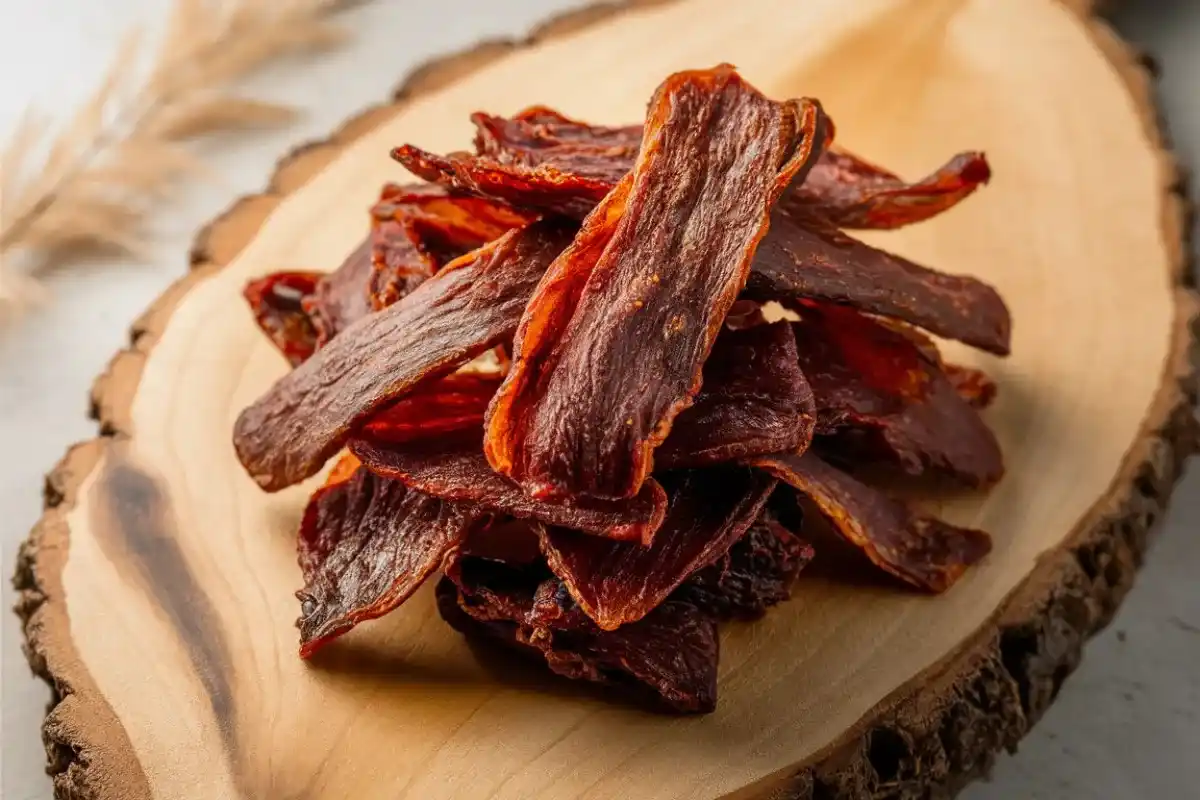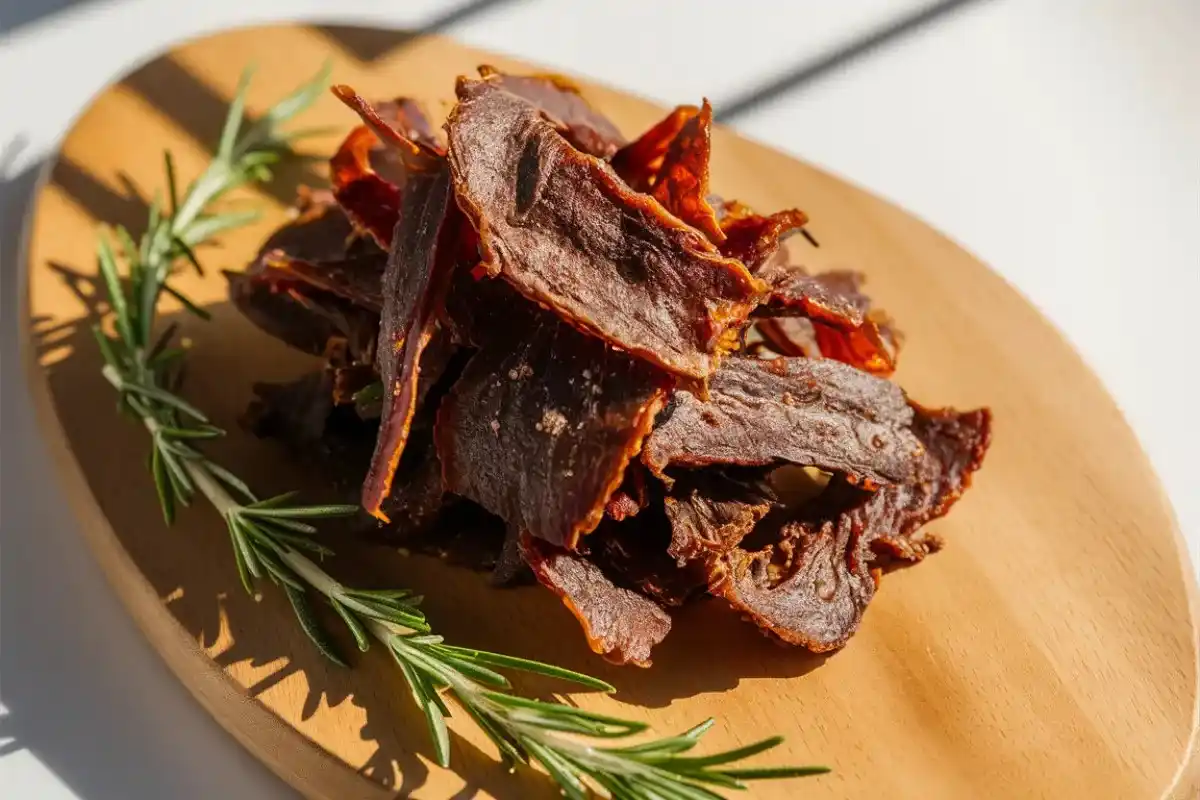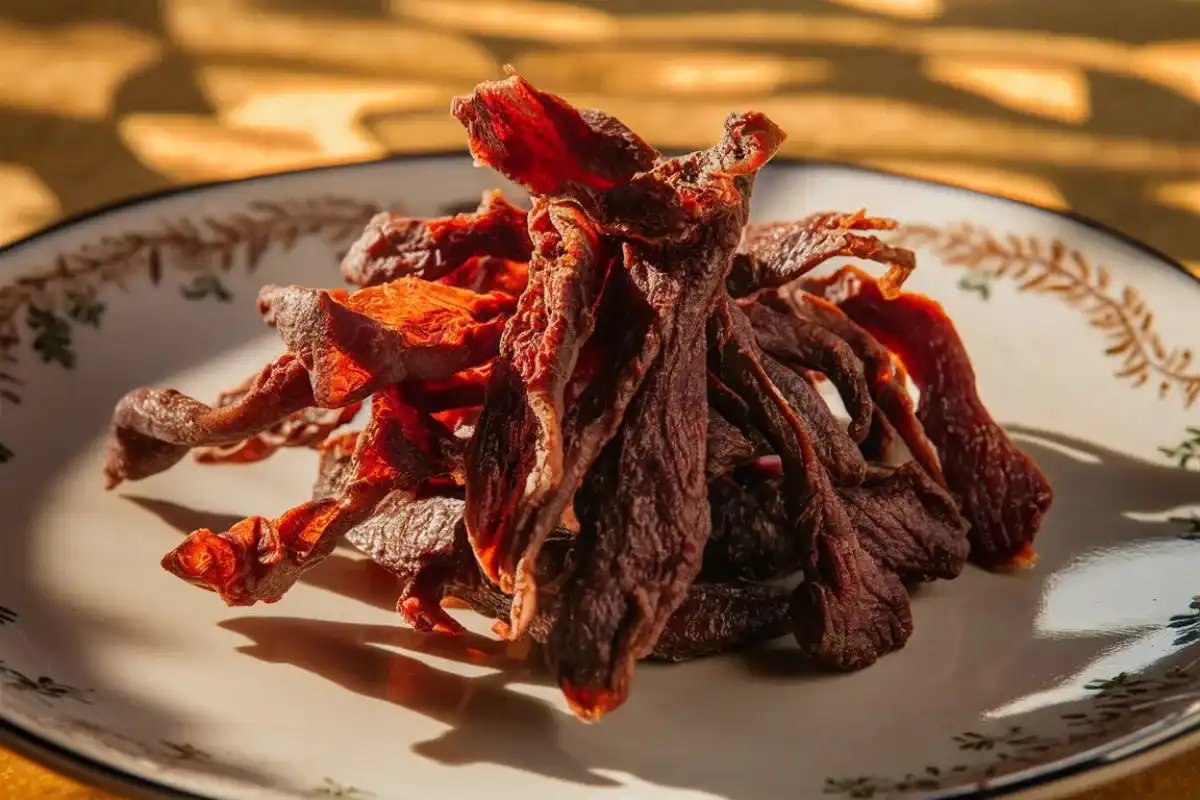Dehydrated jerky is a popular snack enjoyed by many due to its savory flavor, portability, and long shelf life. Made by removing moisture from meat, jerky is a go-to choice for those looking for a quick, protein-packed bite. However, while it is less prone to spoilage than other types of food, can dehydrated jerky go bad? The answer is yes, but understanding the factors that affect its shelf life, how to store it properly, and how to recognize signs of spoilage can help ensure that your jerky remains fresh and safe to eat.
Understanding Dehydrated Jerky
Dehydrated jerky is made by drying strips of meat, such as beef, chicken, or turkey, to remove most of the water content. This process inhibits the growth of bacteria and mold, extending the shelf life of the meat. Dehydration has been used for centuries as a method of preserving food, making it an essential technique in many cultures worldwide.
Modern jerky production often involves additional steps such as marinating the meat in seasonings, using curing agents like salt, and packaging the finished product in airtight containers to further extend its shelf life. This process creates a shelf-stable product that can last for several months or even years, depending on how it is stored and handled.
However, despite its impressive durability, jerky is not invincible. Over time, exposure to factors such as moisture, oxygen, and fluctuating temperatures can cause jerky to spoil. Understanding these factors can help you make informed decisions about purchasing, storing, and consuming dehydrated jerky.
What Factors Affect the Shelf Life of Dehydrated Jerky?

Several factors influence whether and how quickly dehydrated jerky will spoil. Let’s explore the main elements that can impact its longevity:
1. Moisture Content
The primary factor that affects the shelf life of jerky is its moisture content. Jerky is made by drying meat to remove most of its moisture, but the amount of moisture removed can vary. Commercial jerky typically has a lower moisture content than homemade jerky, making it more shelf-stable.
However, even commercial jerky is not entirely moisture-free. Some residual moisture is necessary to maintain the jerky’s texture and flavor. If the moisture content is too high, it can create an environment where bacteria and mold can thrive, leading to spoilage.
2. Packaging Quality
Packaging plays a crucial role in preserving the freshness of dehydrated jerky. Proper packaging helps protect the jerky from exposure to oxygen and moisture, which can accelerate spoilage. Vacuum-sealed packaging is particularly effective, as it removes air and creates a tight seal around the product. This packaging method minimizes the jerky’s contact with oxygen, slowing down the oxidation process and reducing the risk of mold growth.
However, if the packaging is compromised for example, if there are small tears, punctures, or an improper seal oxygen and moisture can enter, creating a favorable environment for spoilage.
3. Storage Conditions
Storage conditions are another important factor that determines how long dehydrated jerky will last. Jerky should be stored in a cool, dry place away from direct sunlight. Exposure to heat, light, and humidity can cause the jerky to deteriorate more quickly. High temperatures can promote the growth of bacteria and mold, while light can cause the fats in the jerky to oxidize and become rancid.
It’s also important to note that fluctuating temperatures can negatively impact jerky. For example, storing jerky in a warm environment and then moving it to a cooler place can cause condensation to form inside the packaging. This moisture can encourage mold growth and spoilage.
4. Oxidation of Fats
While jerky is generally low in fat, the small amount of fat it does contain can oxidize over time. Oxidation occurs when fats are exposed to oxygen, causing them to break down and become rancid. Rancid fat has a distinct, unpleasant odor and taste that can render the jerky unpalatable.
Oxidation is more likely to occur if the jerky is exposed to air, light, or heat. Even in vacuum-sealed packages, there is often some residual oxygen that can cause oxidation over time. This process is accelerated if the jerky is not stored properly.
5. Handling and Contamination
How jerky is handled during production, packaging, and storage can also impact its shelf life. If the jerky is exposed to bacteria or mold spores at any point in the process, it is more likely to spoil. This is why it’s important to buy jerky from reputable sources that follow strict food safety protocols.
Once the packaging is opened, the risk of contamination increases. Hands, surfaces, or utensils that come into contact with the jerky can introduce bacteria, which can multiply if the jerky is not stored properly afterward.
How Long Does Dehydrated Jerky Last?

The shelf life of dehydrated jerky depends on several factors, including its moisture content, packaging, and storage conditions. Here’s a general guideline for how long different types of jerky can last:
- Commercial Jerky (Unopened): Typically, unopened commercial jerky can last for up to 1 year when stored in a cool, dry place. However, this can vary depending on the brand and packaging. For more information on specific jerky shelf lives, see this guide on how long beef jerky lasts.
- Commercial Jerky (Opened): Once opened, commercial jerky should be consumed within a few days to a week if kept at room temperature. To extend its shelf life, store it in an airtight container or resealable bag in the refrigerator.
- Homemade Jerky: Homemade jerky typically has a shorter shelf life due to the lack of preservatives and the variability in dehydration methods. It usually lasts 1 to 2 months when stored in a cool, dry place. Vacuum sealing can extend this to several months.
- Jerky Stored in the Freezer: For long-term storage, jerky can be kept in the freezer for up to 6 months to 1 year. While freezing does not kill bacteria, it does slow down their growth, extending the jerky’s shelf life.
How to Store Dehydrated Jerky to Maximize Freshness
Proper storage is essential to maximizing the shelf life of dehydrated jerky. Here are some best practices for storing jerky:
- Store in a Cool, Dry Place: Jerky should be stored at a stable temperature, ideally between 50-70°F (10-21°C). A pantry or cupboard away from direct sunlight is an ideal location.
- Use Airtight Containers: Once the packaging is opened, transfer the jerky to an airtight container or resealable bag to minimize its exposure to air and moisture.
- Avoid Exposure to Light: Light can accelerate the oxidation of fats in jerky, causing it to become rancid. Store jerky in a dark place, such as a pantry or cupboard.
- Minimize Handling: Avoid touching the jerky with your hands or utensils that may introduce bacteria. Use clean, dry utensils to handle the jerky.
- Consider Vacuum Sealing: If you make homemade jerky or want to extend the shelf life of commercial jerky, consider using a vacuum sealer. This method removes air and creates a tight seal, significantly slowing down the oxidation process.
For more tips on storing jerky, refer to this comprehensive guide on long-term storage methods.
Signs That Dehydrated Jerky Has Gone Bad
It’s important to know the signs that indicate dehydrated jerky has spoiled. Here are the most common indicators:
1. Visual Signs
- Mold: Mold is the most obvious sign that jerky has gone bad. It appears as white, green, or gray fuzzy substances with a spider-web pattern. Mold growth indicates that moisture has gotten into the jerky, either during storage or from handling.
- Discoloration: Jerky should have a consistent color throughout. Dark or uneven coloring, especially if there are black or brown spots, may indicate spoilage or rancidity.
- Texture Changes: Jerky should be firm and pliable, not too soft or mushy. If the jerky feels sticky, slimy, or unusually soft, it may have gone bad.
2. Smell Test
- Rancid Odor: A rancid or sour smell is a clear indication that the fats in the jerky have oxidized and it is no longer safe to eat. Jerky should have a clean, savory meat aroma. If it smells off, discard it immediately.
3. Texture and Taste Changes
- Off-Taste: If jerky tastes sour, bitter, or metallic, it has likely spoiled. Trust your taste buds; if something seems off, it’s better to be safe and discard the jerky.
If you notice any of these signs, it’s best to err on the side of caution and discard the jerky. For a more detailed guide on identifying spoiled jerky, visit How to Tell If Beef Jerky is Bad.
How to Prevent Spoilage of Dehydrated Jerky

Preventing spoilage is crucial to ensuring that your jerky remains fresh and safe to eat. Here are some tips to help extend the shelf life of your jerky:
- Buy High-Quality Jerky: Purchase jerky from reputable brands that use proper dehydration techniques and packaging. Look for products that are vacuum-sealed or packaged in airtight containers.
- Store Properly: Keep jerky in a cool, dry place, and avoid exposing it to heat, light, and humidity. Use airtight containers to store opened jerky.
- Avoid Frequent Opening and Closing: Each time the jerky package is opened, it is exposed to air and moisture. Minimize the number of times you open the package to reduce the risk of spoilage.
- Freeze for Long-Term Storage: If you do not plan to consume the jerky within a few weeks, consider freezing it. Freezing slows down the growth of bacteria and mold, extending the jerky’s shelf life.
Is Dehydrated Jerky a Good Choice for Long-Term Storage?
Dehydrated jerky is an excellent choice for long-term storage due to its low moisture content and shelf stability. However, it’s important to store it properly to ensure it remains fresh and safe to eat. Jerky can last for several months to a year or longer when stored in an airtight container in a cool, dry place. For those interested in preserving jerky for longer periods, vacuum-sealing and freezing are effective methods.
For practical tips on storing jerky for long-term use, check out How to Store Beef Jerky Long Term.
Frequently Asked Questions
1. Can Dehydrated Jerky Go Moldy Even If Stored Properly?
Yes, dehydrated jerky can still develop mold if exposed to moisture or air, even when stored correctly. Ensuring that the jerky is kept in an airtight container in a cool, dry place can help reduce the risk of mold growth.
2. How Can I Make My Homemade Jerky Last Longer?
To extend the shelf life of homemade jerky, store it in airtight containers or vacuum-sealed bags. Keep the jerky in a cool, dry place away from light, and consider refrigeration or freezing for longer storage.
3. Is It Safe to Eat Jerky Past Its Best-By Date?
While jerky is often safe to eat past its best-by date, its quality may decline. The best-by date indicates the period of peak freshness. If the jerky shows no signs of spoilage, it can still be consumed, but it may not taste as good.
4. What Is the Difference Between a Best-By Date and an Expiration Date on Jerky?
A best-by date refers to the period when the jerky is at its peak quality and flavor. An expiration date, however, indicates when the product is no longer considered safe to consume.
5. Can You Freeze Jerky to Extend Its Shelf Life?
Yes, freezing jerky can help extend its shelf life. It is a good option if you do not plan to eat the jerky soon. Make sure to store it in an airtight, freezer-safe bag or container to prevent freezer burn.
6. Does Dehydrated Jerky Lose Nutritional Value Over Time?
Dehydrated jerky retains most of its nutritional value over time, but it may lose some vitamins, especially if exposed to light or air. However, it generally remains a high-protein, nutritious snack even after extended storage.
Conclusion
Dehydrated jerky, when stored and handled properly, can remain fresh and enjoyable for a significant period. However, it is essential to recognize the signs of spoilage, understand the factors that can cause it, and follow best practices for storage. Always keep jerky in a cool, dry place, minimize its exposure to air and light, and consider refrigeration or freezing only when necessary.
By following these guidelines, you can enjoy this convenient and tasty snack without worrying about it going bad. Jerky is a versatile and durable food option that can be a great addition to your pantry, outdoor adventures, or emergency preparedness kit.

